Congo fish: description, rules of keeping, reproduction and compatibility
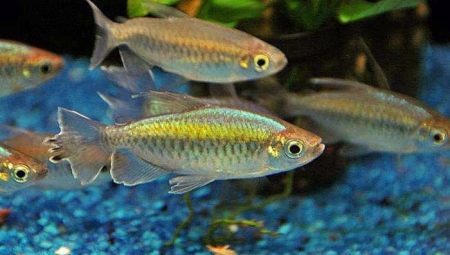
Congo fish are a highly sought after species for home aquariums. They delight the eye with their beautiful scales and truly adorn the composition of the decorative reservoir. However, not everyone knows what the main features of these underwater inhabitants are, how to properly care for them in a home environment, and how to breed Congo on their own. All these nuances will be discussed in detail in this article.
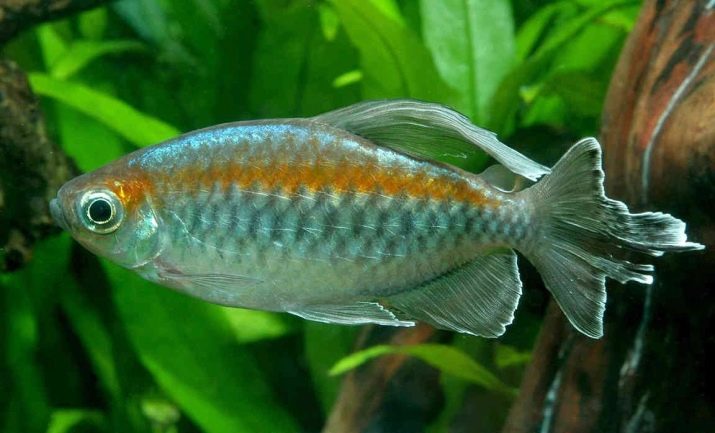
Species characteristic
The full name of this fish is rainbow tetra konga. This name is based on the peculiarities of the color that males possess. Their scales, light gray, shimmer with all the colors of the rainbow. Males are larger (8.5 to 9 cm) compared to females, the body length of which is only 6 cm. The latter look more modest - there are no multi-colored overflows on their scales.
If we consider the color of the scales in detail, then it can be noted that closer to the upper part of the body in males there is a yellow-orange color, casting rainbow, and towards the bottom it turns into blue.
In addition to color, the characteristics of this fish include the following.
- The shape of the body, like in most fish, is elongated, compressed from the sides.
- Congo belongs to the haracin family, which, in turn, belongs to the order of the Characinaceae, which are characterized by the presence of a small adipose fin located in the dorsal part between the caudal and dorsal processes.
- In the middle of the caudal, as well as on the dorsal fin of males, there are long processes called veil. Many believe that the tail of this fish has three lobes, classifying its middle part as a separate lobe.
- Congo eyes are large and expressive.
- The dorsal, anal and pelvic fins are gray, which can sometimes turn purple.
- The life span of these fish lasts up to 5 years.
- The homeland of these fish is the central and equatorial parts of Africa.
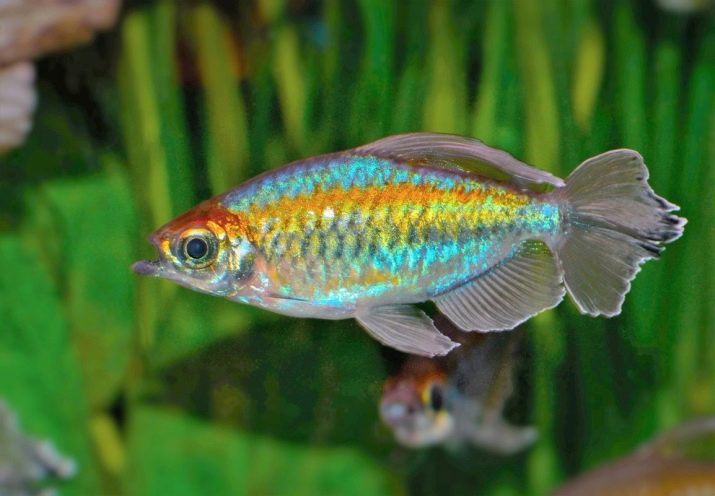
The first mention of such a fish appeared in 1899, they were made by George Albert Boulanger, who was considered an expert on freshwater fish found in Africa. The main Congo habitats on the continent are the upper reaches of the Congo River and the Zaire River Basin. These individuals keep in flocks in rather muddy water. They eat zooplankton, insects, plants and crustaceans.
Tetra, which is sold in stores, is usually introduced in Asia or Eastern Europe.

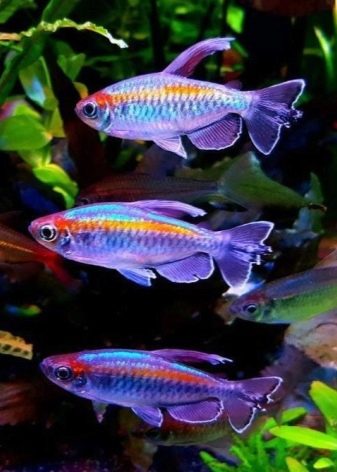
Content
Congo, like any aquarium fish, requires certain conditions for proper maintenance. The aquarium owner needs to consider the following nuances.
- Since in natural conditions the Congo lives in small flocks, the optimal number for an aquarium should be from 6 to 8 pieces. If the volume of the tank allows, you can have up to 10 fish. Remember that being in too small a group can stress the fish due to the feeling of insecurity. This, in turn, negatively affects the color of males and deprives them of their pleasing overflows.
- It is also worth observing the proportion of the sex ratio in the group. It is better for 2-3 males to have 1 female.
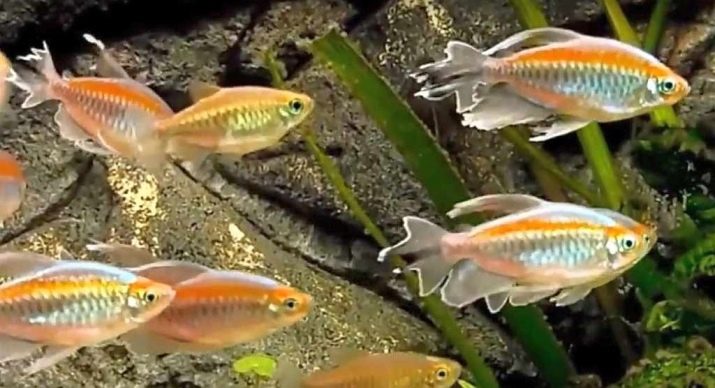
The recommended size for a Congo home flock is 100 to 130 liters.
- Place more plants in the aquarium, both live and decorative. This will further protect the Congo from stress, as they will have the opportunity to hide. In order for the natural flora to grow faster, the intensity of the water refresher in the tank should be 50% per week.
- The best way to place plants in a Congo aquarium is to sit near the walls on the sides. The central area of the tank should be set aside for the active swimming area.
- The water in the aquarium should be slightly acidic with a pH of 6.0 to 6.5, but not higher.
- It is also worth keeping an eye on the cleanliness of your home reservoir, providing it with high-quality filtration and circulation.
- It is important to maintain an appropriate temperature regime. For the Congo tetra, it is 24-27 degrees above zero Celsius.
- To reduce the likelihood of stressful moments for fish, choose dark soil for your tank, and also provide dim lighting. If too much light is still coming in, add plants to the aquarium that will shade it by floating on the surface.

The peaceful nature of the Congo does not allow their proximity to more active or aggressive fish species. Some individuals may even bite off the veil of their fins, which is highly undesirable. Therefore, iris, cichlids, catfish-corridors, loaches, pearl gurani will become suitable neighbors in the aquarium. Equal in size and similar in character to the Congo, these varieties will create the perfect microclimate for each other. However, remember that fish that are too small will feel uncomfortable with the Congo.
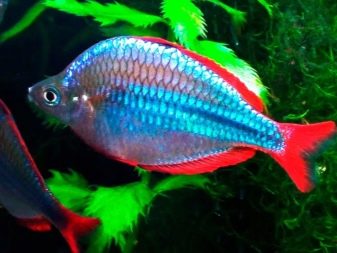
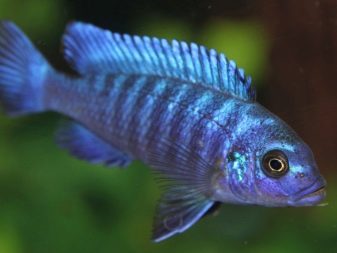
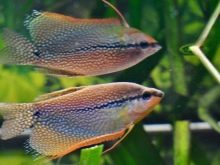
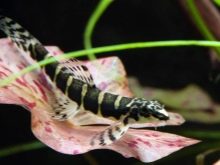
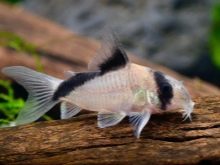
If you notice formations in the form of fluff, cotton wool or moss on the body of a fish, this indicates a fungal disease. If left untreated, ulcers and bruises can develop on the scales. Therefore, sick specimens should be placed in a separate container and consult a veterinarian about treatment.
- If you will use medicine for such fish, before this procedure, it is necessary to clean the filtration system. It is imperative to remove the charcoal filter, otherwise it will suck up the drugs. Be sure to read the instructions and dosage rules before treating your pet.
- Remember to check the water quality regularly. First of all, it is because of its deterioration that the Congo can have health problems.To monitor water quality yourself, purchase special water test kits.
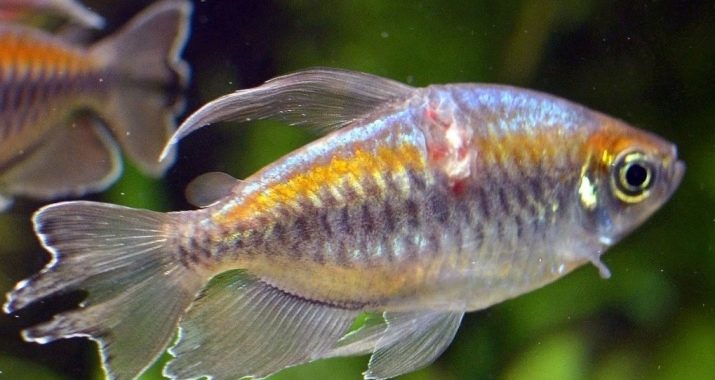
Nutrition
Problems with feeding this fish should not arise due to its omnivorous nature. However, there are foods that are most desirable in the diet of aquarium Congo.
- Fresh or frozen arrhythmias, as well as bloodworms, are suitable from live food.
- You should also pay attention to cereals, vegetables and herbal supplements. This will help you keep your aquarium plants intact. If the Congos do not receive plant feed, they will begin to eat the live plants in the tank.
- It is advisable to buy dry fish food not by weight and be sure to look at its expiration date.
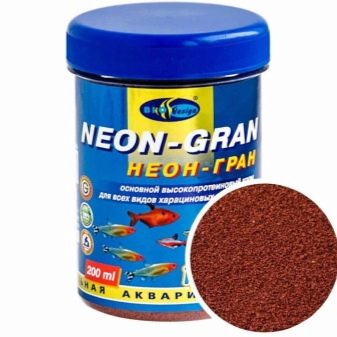

Breeding
This is not to say that breeding this tetra is simple, but if you follow a certain algorithm, even novice fish holders can cope with it. This strategy is as follows.
- Select the most active and vibrant specimens of male and female sex. The female should be the largest in the aquarium.
- Plant them in different containers and intensively feed them with live food for a week.
- Create a natural environment in the spawning tank. Mix natural algae and plants in it.
- A separator network should be placed a couple of centimeters above the bottom so that parents cannot eat the spawned eggs.
- Keep the temperature in the aquarium + 26 degrees Celsius, and the pH value is 6.5.
- In terms of number, more than 2 fish can be taken for breeding, but males should prevail.
When the selected individuals are in the aquarium, the first stage of interaction between them will be courtship. After spawning occurs and the female lays eggs in an amount of 100 to 300 pieces, which settle on the bottom of the aquarium. The diameter of the eggs is 1.8 mm. Spawning can last up to 72 hours.
Please note that the eggs that the female lays first may not survive. They become whitish and should be removed with a special pipette. After that, the water is disinfected by adding methylene blue to it.
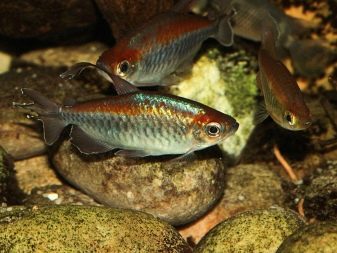
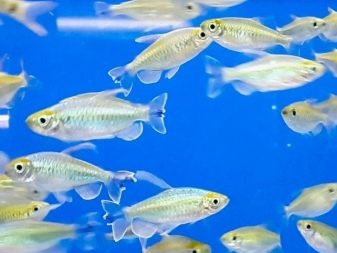
When spawning is over, remove the adults from the tank. Then the water level in it should be reduced by 3 cm. After 6 or 7 days from the moment of fertilization, the fry are born. At this time, the water level should be raised again. Take care of the nutrition of newborn fish by giving them quality artificial food, egg yolk, rotifers, ciliates.
Thus, breeding such an African fish is not very difficult. If you take into account all the features of keeping fish such as Congo, you can not only decorate your aquarium with them, but also breed a tetra yourself, which will be interesting for you and all your family members to watch.
For the rainbow tetra congo, see the video below.








